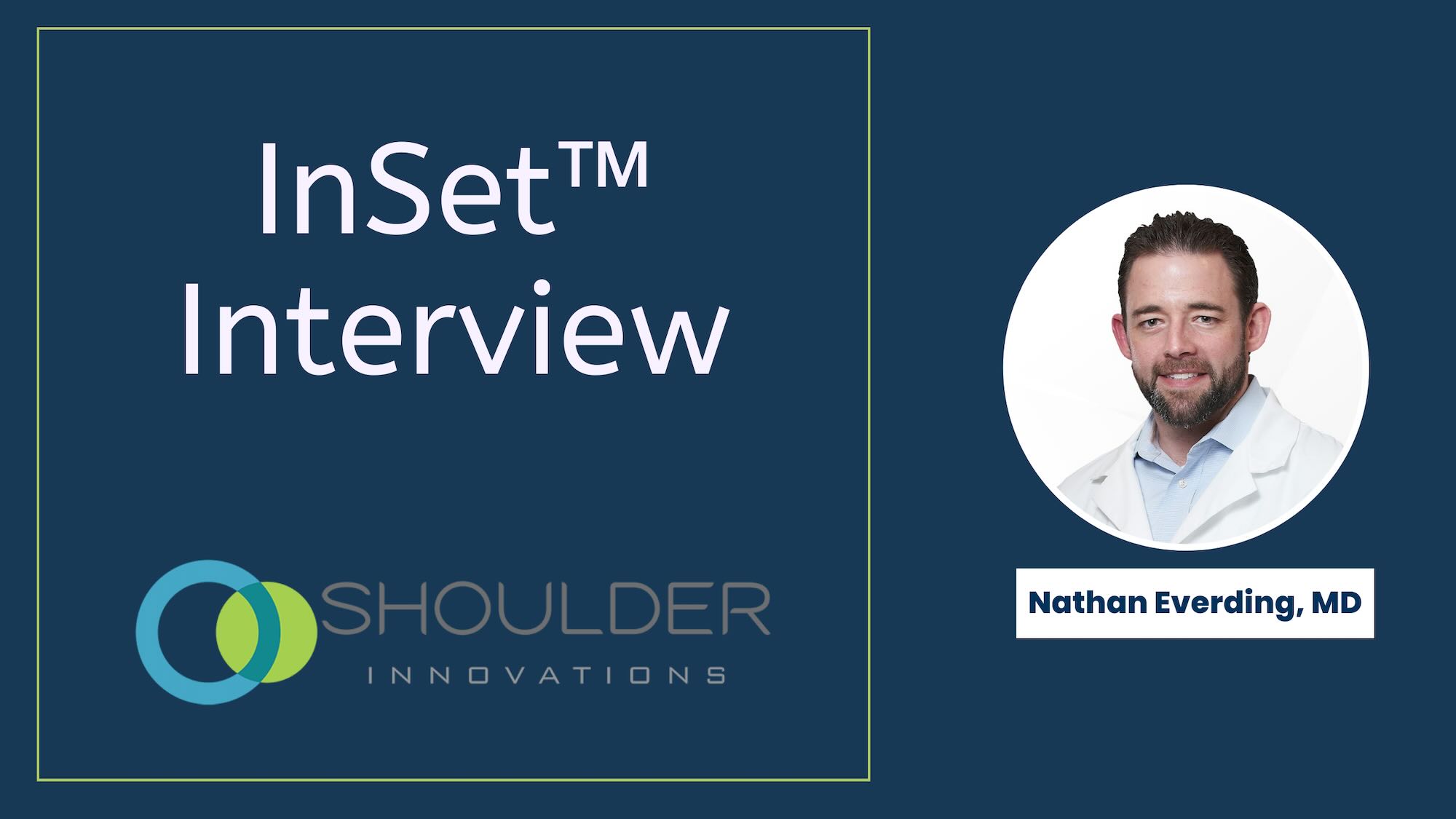We recently had the opportunity to interview Dr. Nathan Everding and learn more about his background and experiences using InSet™ Systems from Shoulder Innovations in his practice as an orthopedic surgeon. An edited version of our interview led by David Blue follows.
David Blue
Thank you for joining us today. Would you share your background with us, including how you became involved in healthcare and what attracted you to orthopedics?
Dr. Everding
Growing up in upstate New York, specifically in the Syracuse area, I’ve always had an interest in healthcare from a young age. Initially, I wasn’t exactly sure of my path within the medical field, though I was drawn towards surgery. My educational journey took me to New England for college, followed by medical school in New York.
It’s common for many in the field to gravitate towards orthopedics early on, often due to a connection with sports. However, my interest in orthopedics was sparked a bit differently. It wasn’t until participating in elective rotations during medical school that I was introduced to orthopedics. This experience was a turning point for me, as I immediately felt a strong connection to the specialty. This newfound passion led me to pursue and eventually enter an orthopedic residency, marking the beginning of my specialized medical career.
David Blue
What attracted you to shoulder as a subspecialty?
Dr. Everding
My interest in shoulder surgery developed during my third year of residency. At that time, I was primarily focused on pursuing hand surgery. However, the arrival of a new attending, Dr. Andy Jawa, who had recently completed a fellowship in hand and shoulder surgery, significantly influenced my career path. His expertise and the innovative work he was involved in, particularly in shoulder surgery, caught my attention. Our program didn’t have many specialists focusing on joint replacements, so witnessing his focus on shoulder procedures was particularly intriguing to me. This experience inspired me to broaden my specialization, leading me to complete not one, but two fellowships one in hand surgery followed by another in shoulder surgery. This dual fellowship path has shaped my current practice in the field.
David Blue
Can you share your journey to the InSet™ Shoulder System?
Dr. Everding
My introduction to Shoulder Innovations and the InSet™ Shoulder System came somewhat indirectly through my local representatives, who had developed an interest in the subject through their own networks. Their exploration into the field caught the attention of Dr. Rob Gillespie, who, upon learning of their connection with me, reached out directly and encouraged me to explore the InSet™ shoulder implants, which he was finding particularly impressive. Following Dr. Gillespie’s enthusiastic recommendation, I engaged in conversations with my local reps, who also shared positive feedback about the system. This prompted further discussions between Dr. Gillespie and myself, deepening my interest in the innovation.
David Blue
What were your initial impressions of the InSet™ Shoulder System?
Dr. Everding
First, the uniqueness of the glenoid concept compared to other shoulder systems is what stood out to me first. Just like we’ve seen with hip and knee implants, many shoulder implant systems become very similar over time, leaving little room for differentiation. However, a distinctive feature, such as the method used for managing the glenoid with an InSet™ system, offers a novel approach to fixation that is not only different, but potentially superior in certain aspects.
Second, my experience with the InSet™ Reverse has been very positive. The system’s versatility stands out, particularly due to its inset approach, which results in a smaller imprint on the glenoid. This feature allows for a more tailored fit to the patient’s anatomy, enhancing the adaptability of the implant.
Third, I believe the humeral component’s small footprint is especially beneficial as reverse shoulder arthroplasty becomes more common in younger patients. Preserving bone is crucial for these individuals, and the system’s design effectively addresses this need.
Overall, the InSet™ System is not only easy to use but also requires fewer trays during surgery, simplifying the logistical aspect of the procedure. This efficiency, combined with the system’s design aimed at preserving bone and ensuring robust fixation, makes it a fantastic choice in the field of shoulder arthroplasty.
David Blue
You mentioned that we need fewer trays than other shoulder systems. In your experience, what has the InSet™ single-tray TSA and dual-tray RSA meant for you?
Dr. Everding
The transition to a single-tray system for total anatomic procedures and a dual-tray system for reverse shoulder procedures has begun to show its value in terms of operating room (OR) efficiency.
The most immediate and noticeable impact to me personally is the reduction in clutter within the OR. This streamlined approach not only makes the environment more manageable but also provides our technicians with more space to operate effectively. Both the surgical team and I appreciate the simplicity and reduced hassle of having fewer items to open and manage during procedures.
The broader implications of this streamlined system extend beyond the immediate space savings in the OR. They include more efficient use of storage space and reduced costs associated with sterilizing and turning over multiple trays. We have a pretty busy outpatient center, and as we adapt to the new changes in Medicare allowing for shoulder arthroplasty in surgery centers, the benefits of this system become even more pronounced. In a surgery center setting, where space is at a premium and efficiency is paramount, the reduced footprint and simplified sterilization process offered by the single and dual-tray systems are extremely valuable can significantly impact operational effectiveness and cost savings.
David Blue
Any closing thoughts, Dr. Everding?
Dr. Everding
For me, this marks the start of a new phase in my career journey. So far, my experience with Shoulder Innovations has been very positive. It’s a great company with great shoulder implants, and the future looks bright!
Dr. Nathan Everding is an Orthopedic Surgeon in Syracuse, NY

